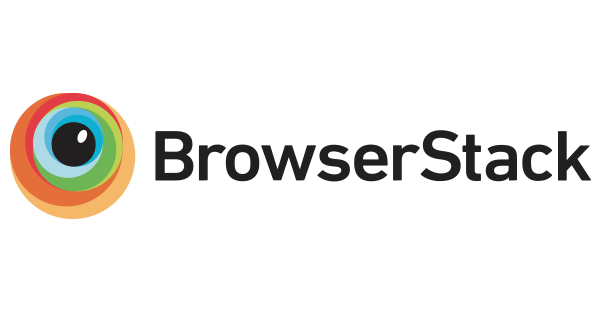https://github.com/wri/gfw
Global Forest Watch: An online, global, near-real time forest monitoring tool
https://github.com/wri/gfw
deforestation forest-monitoring mapbox nextjs react redux satellite-imagery
Last synced: 10 months ago
JSON representation
Global Forest Watch: An online, global, near-real time forest monitoring tool
- Host: GitHub
- URL: https://github.com/wri/gfw
- Owner: wri
- License: mit
- Created: 2012-05-17T11:16:15.000Z (over 13 years ago)
- Default Branch: develop
- Last Pushed: 2025-03-07T18:53:38.000Z (10 months ago)
- Last Synced: 2025-03-11T01:09:16.232Z (10 months ago)
- Topics: deforestation, forest-monitoring, mapbox, nextjs, react, redux, satellite-imagery
- Language: JavaScript
- Homepage: https://www.globalforestwatch.org
- Size: 366 MB
- Stars: 284
- Watchers: 40
- Forks: 96
- Open Issues: 23
-
Metadata Files:
- Readme: README.md
- License: LICENSE
Awesome Lists containing this project
- open-sustainable-technology - Global Forest Watch - An online, global and near real-time forest monitoring tool. (Biosphere / Forest Observation and Management)
README
# What is Global Forest Watch?
[Global Forest Watch](http://www.globalforestwatch.org/) (GFW) is a
dynamic online forest monitoring and alert system that empowers people
everywhere to better manage forests. This repository contains the GFW web app.

# Getting started
The GFW web app is built with [Nextjs](https://nextjs.org/), [React](https://reactjs.org/) and [Redux](https://redux.js.org/).
## Installing the app
Clone the repo:
```bash
$ git clone https://github.com/wri/gfw.git
```
Installing dependencies:
```bash
$ yarn
```
Copy the `.env.sample` to `.env.local`, and start the server:
```bash
$ yarn dev
```
The app should now be accessible on [http://0.0.0.0:3000](http://0.0.0.0:3000).
## Developing
We follow a [Gitflow Worklow](https://www.atlassian.com/git/tutorials/comparing-workflows/gitflow-workflow) for development and deployment.
We merge pull requests into `develop`, which is deployed automatically to both the staging and pre-production servers. In order to release features into production, we merge `develop` into `master`, triggering an automatic deployment to production.
.svg)
### Staging, pre-production and review apps
We use [Heroku](https://www.heroku.com/) to deploy our apps. Production is deployed automatically from `master` to [globalforestwatch.org](https://www.globalforestwatch.org).
We have two staging environments: staging and pre-production. Both are deployed automatically from `develop`.
The main difference is that staging points to the staging environments of the APIs we access, pre-production points to the production ones. This is set by the `NEXT_PUBLIC_FEATURE_ENV` env variable.
We also make use of Heroku's [Review Apps](https://devcenter.heroku.com/articles/github-integration-review-apps) feature.
When a pull request is created, a review app is deployed automatically by Heroku with a `NEXT_PUBLIC_FEATURE_ENV` of `preproduction`, and a link to the environment is added automatically to the respective pull request.
## Releases
We are using github releases to record changes to the app. To help us manage this we are using [Zeit Releases](https://github.com/zeit/release), an npm package for handling github releases, tagging commits (major, minor, patch), and automating semantic release logs. For a more detailed explanation of semantic changelogs see [this post](https://semver.org/).
#### Managing commits for a release
When developing, you can tag your commits as follows: `fix some excellent bug (patch)` where `patch` can be `(major/minor/patch/ignore)`. This commit title will automatically be grouped into the correct section for the release. Otherwise you will be prompted during the release to assign (or ignore) each of your commits. You will have to do this for every commit so don't forget to squash!
So how do you make a release on GFW?
1. Checkout master and merge in develop (not compulsory but advised for consistency).
2. Run `npx release [type]` where type can be `major`, `minor`, `patch`, or `pre` (see [zeit docs](https://github.com/zeit/release) for more details).
3. Follow the prompts to manage commits.
4. You will be taken to github draft release editor with all your commits grouped and ready to go.
5. Enter your title and include any extra info you want.
6. Publish!
# RW API Documentation for GFW
Map layers and relevant datasets are stored in the [RW-API](http://api.resourcewatch.org/) and the `globalforestwatch.org/map` utilises the [layer-manager](https://github.com/Vizzuality/layer-manager) to render them.
The schema used to style these layers, their legends, and define their interactions are specific to the *Global Forest Watch* platform.
When creating or modifying layers/datasets for GFW, follow the schema and syntax outlined in the [API Documentation](./docs/API_Documentation.md) markdown file.
To view GFW-specific layers and datasets use the following endpoint:
https://api.resourcewatch.org/v1/dataset?app=gfw&includes=layer,vocabulary,metadata&page[size]=200
### BrowserStack
We use [BrowserStack](https://www.browserstack.com) to find and fix cross-browser issues.
